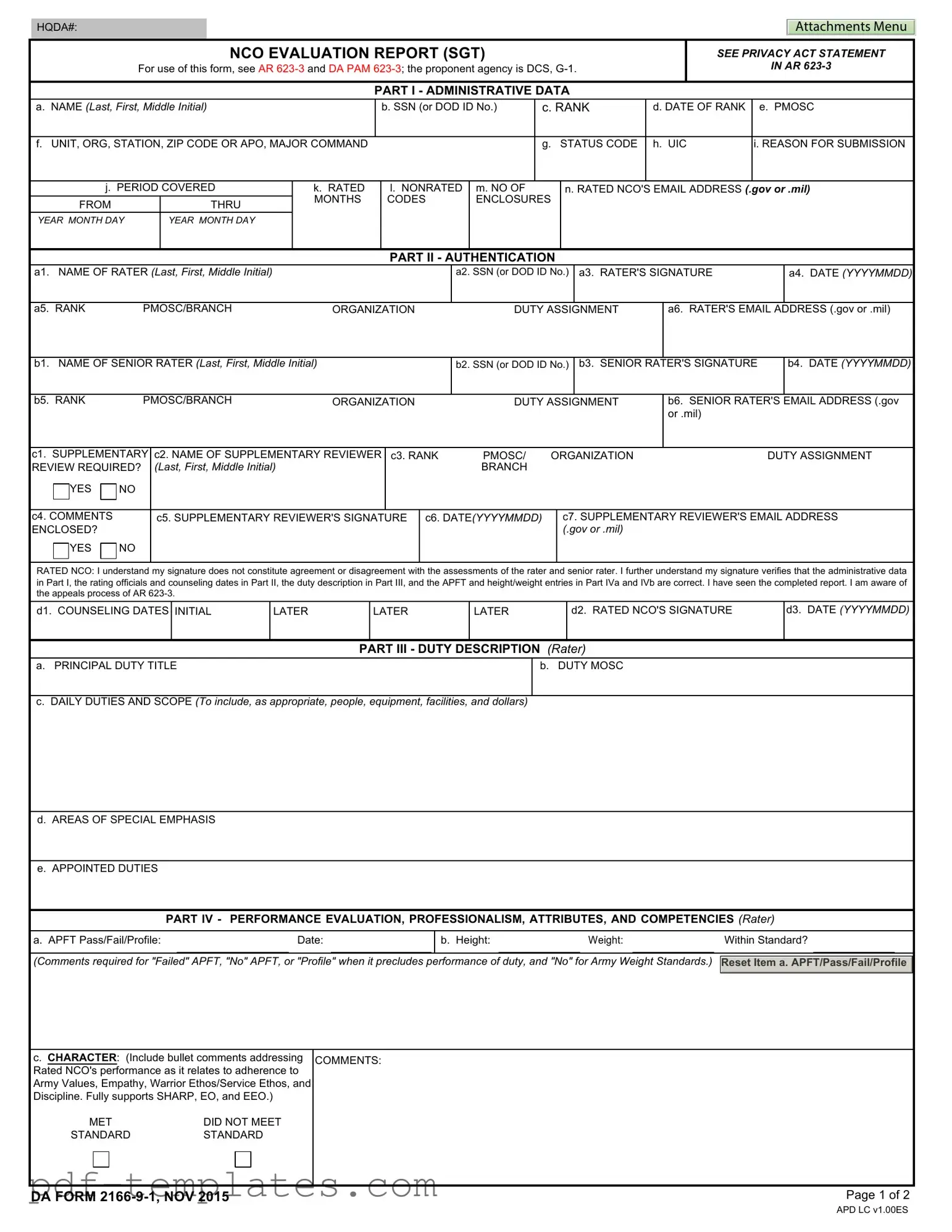The DA Form 2166-9-1 is an essential tool for evaluating the performance of Non-Commissioned Officers (NCOs) in the U.S. Army. A similar document is the DA Form 2166-9, which serves as the overall evaluation report for NCOs. While the 2166-9-1 focuses specifically on the evaluation of Sergeants, the 2166-9 provides a broader evaluation for all NCO ranks. Both forms emphasize the importance of providing feedback on leadership qualities, professional development, and overall performance, ensuring that NCOs receive consistent assessments throughout their careers.
Another comparable document is the DA Form 1059, which is used for the Academic Evaluation Report. This form evaluates soldiers who have completed training courses or educational programs. Like the DA Form 2166-9-1, the 1059 assesses the individual's performance, potential, and accomplishments. Both forms aim to document a soldier's growth and readiness for future responsibilities, highlighting the importance of continuous learning and development in the military.
The DA Form 4856 is also relevant as it serves as a Developmental Counseling Form. This document is used by leaders to provide feedback and guidance to soldiers on their performance and behavior. Similar to the DA Form 2166-9-1, the 4856 encourages open communication between leaders and soldiers, fostering a culture of accountability and improvement. Both forms play a critical role in ensuring that soldiers understand their strengths and areas for development.
Next, the DA Form 700, known as the Personnel Qualification Record, provides a comprehensive overview of a soldier's qualifications, assignments, and training. While the DA Form 2166-9-1 focuses on performance evaluation, the 700 serves as a summary of a soldier's entire career, including education and certifications. Both documents are vital for tracking a soldier's progress and ensuring they meet the necessary standards for advancement.
The DA Form 2-1, or the Personnel Qualification Record, is another document that shares similarities with the DA Form 2166-9-1. It captures a soldier's career history, including assignments, training, and awards. While the 2166-9-1 evaluates current performance, the 2-1 provides a historical perspective, allowing leaders to assess a soldier's overall trajectory. Together, these forms help leaders make informed decisions about promotions and assignments.
Understanding the significance of a Power of Attorney for a Child document can help fulfill a parent's duty to safeguard their child's best interests in various circumstances. This legal tool empowers designated adults to assume essential responsibilities when parents are unavailable, ensuring that crucial decisions are made without delay.
The DA Form 3349, which is the Physical Profile, is relevant as it documents a soldier's physical capabilities and limitations. This form is essential for understanding how a soldier's physical condition may impact their performance, much like the DA Form 2166-9-1 evaluates an NCO's overall effectiveness. Both documents emphasize the importance of maintaining physical readiness and the role it plays in a soldier's ability to lead and perform duties.
Another document to consider is the DA Form 67-9, which is the Officer Evaluation Report. While this form is specific to officers, it shares the same purpose of evaluating performance and potential. Both the DA Form 67-9 and the DA Form 2166-9-1 assess leadership qualities, contributions to the unit, and readiness for future roles. They provide a structured way to document evaluations and ensure that feedback is standardized across ranks.
The DA Form 600-8-101, known as the Army Personnel Action, is a document that tracks personnel actions such as promotions and reassignments. While it does not evaluate performance directly, it is closely related to the evaluation process. The DA Form 2166-9-1 informs personnel actions by providing a basis for decisions regarding promotions and career advancement, highlighting the interconnectedness of evaluation and personnel management.
Lastly, the DA Form 2404, which is the Equipment Inspection and Maintenance Worksheet, is similar in that it documents the condition and performance of military equipment. While it focuses on equipment rather than personnel, both forms emphasize the importance of accountability and performance standards. They ensure that both soldiers and equipment are maintained to the highest standards, contributing to overall mission success.
